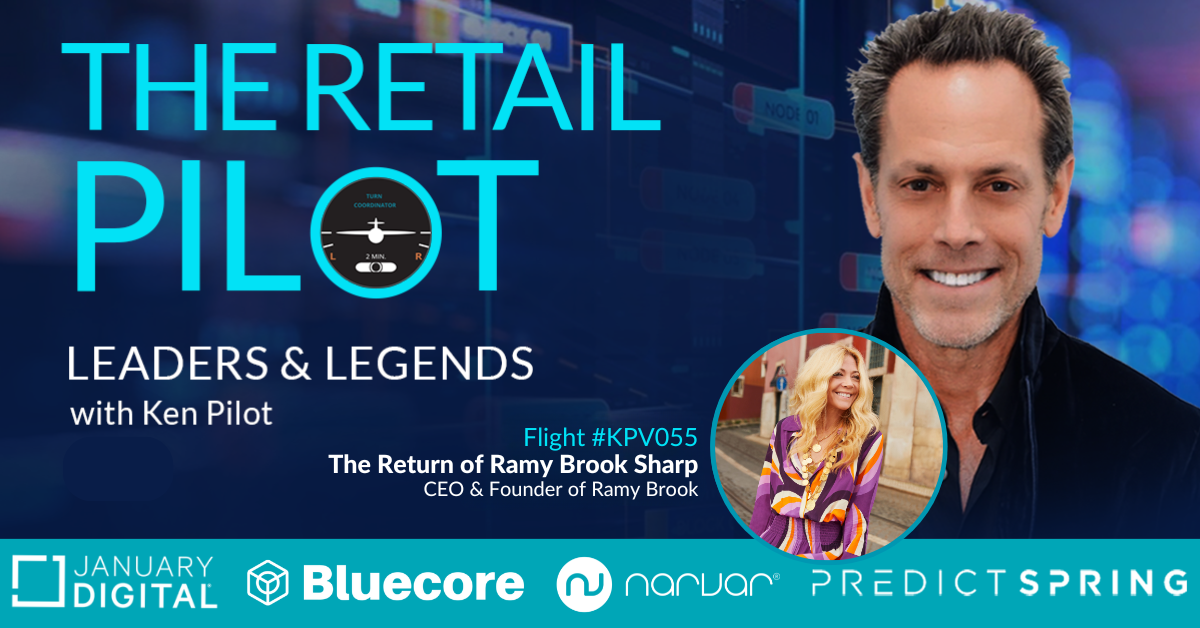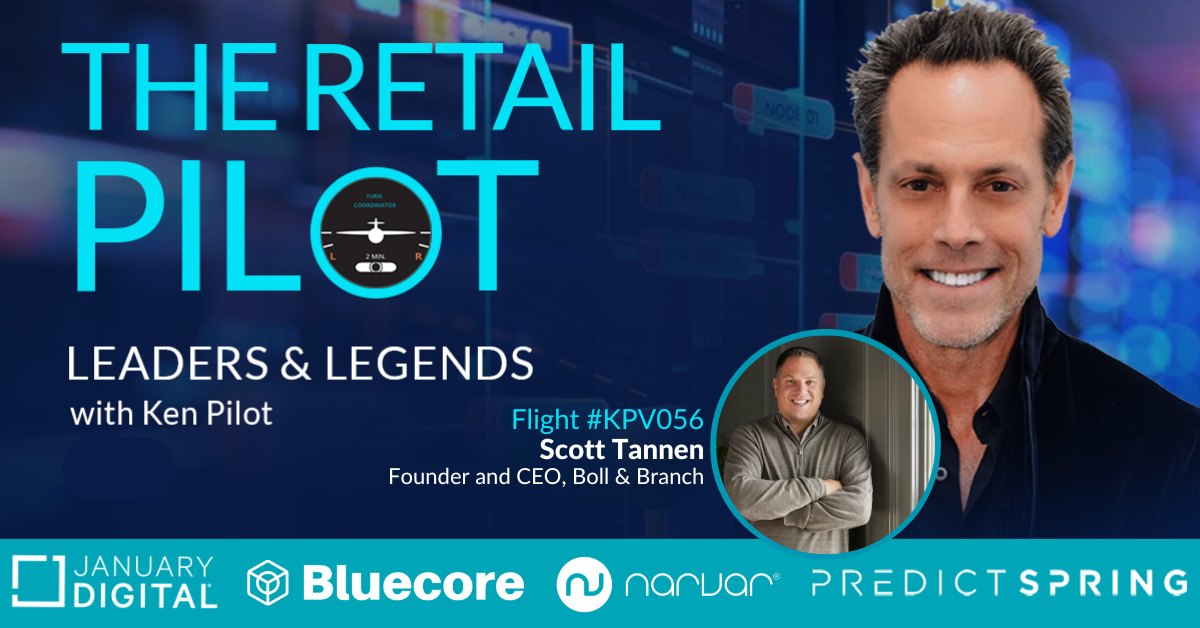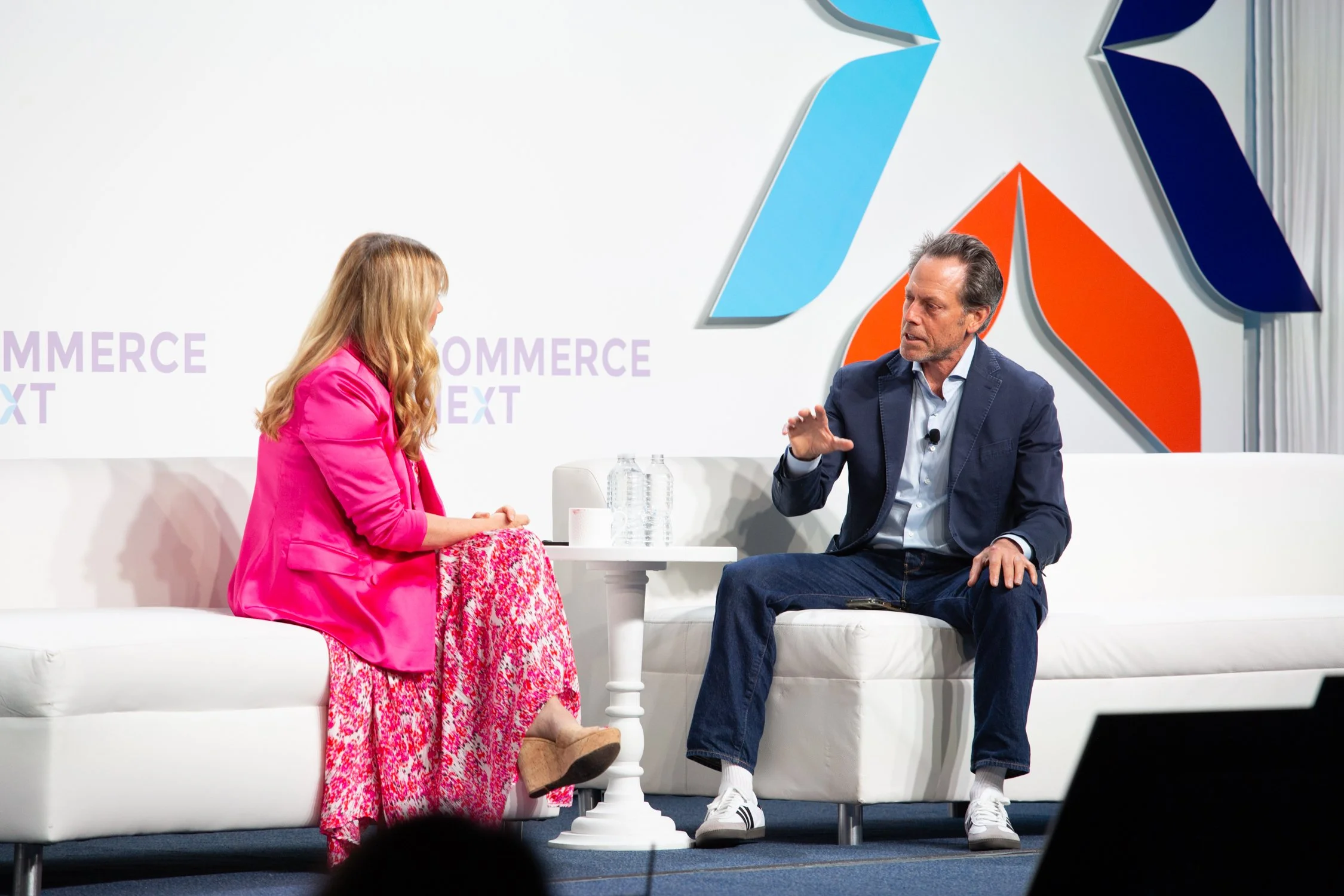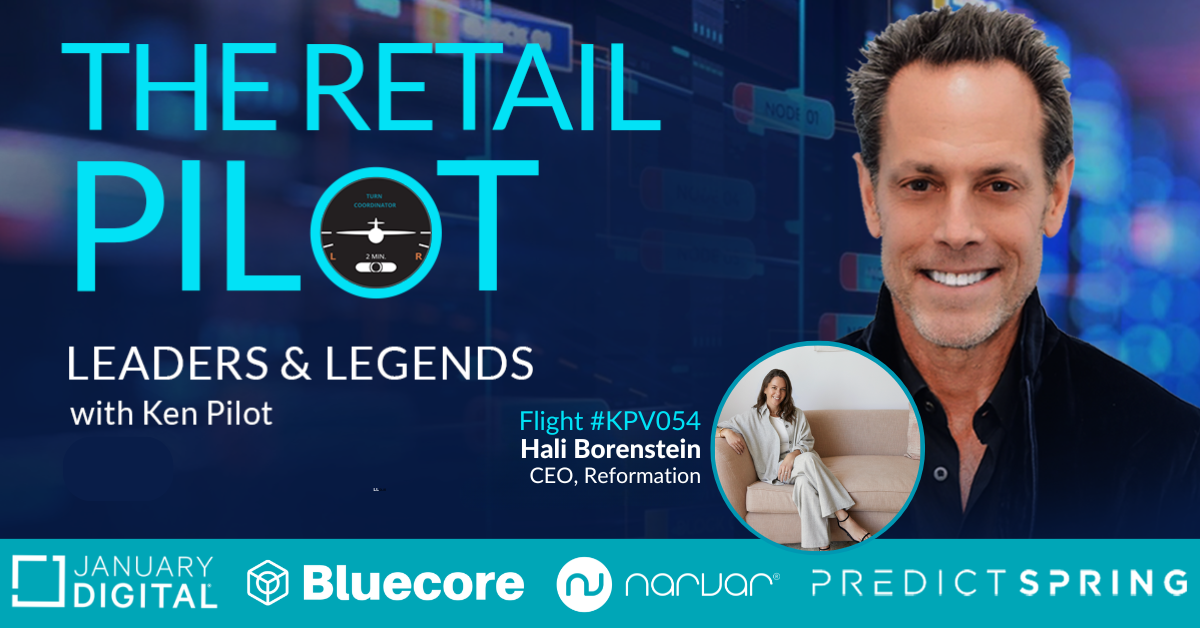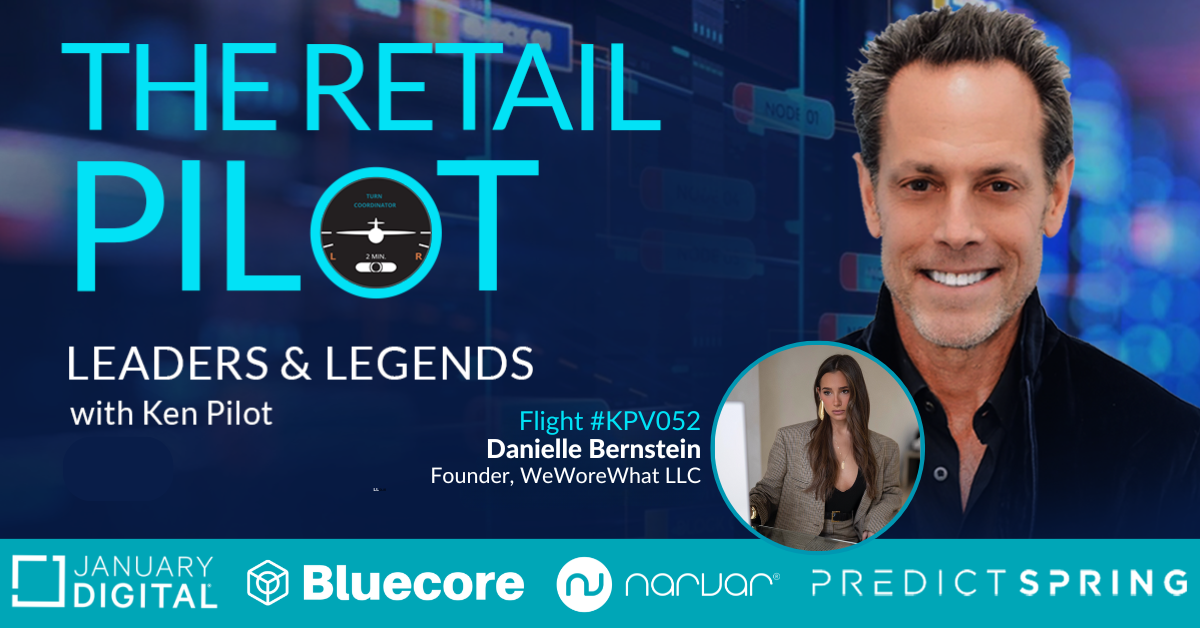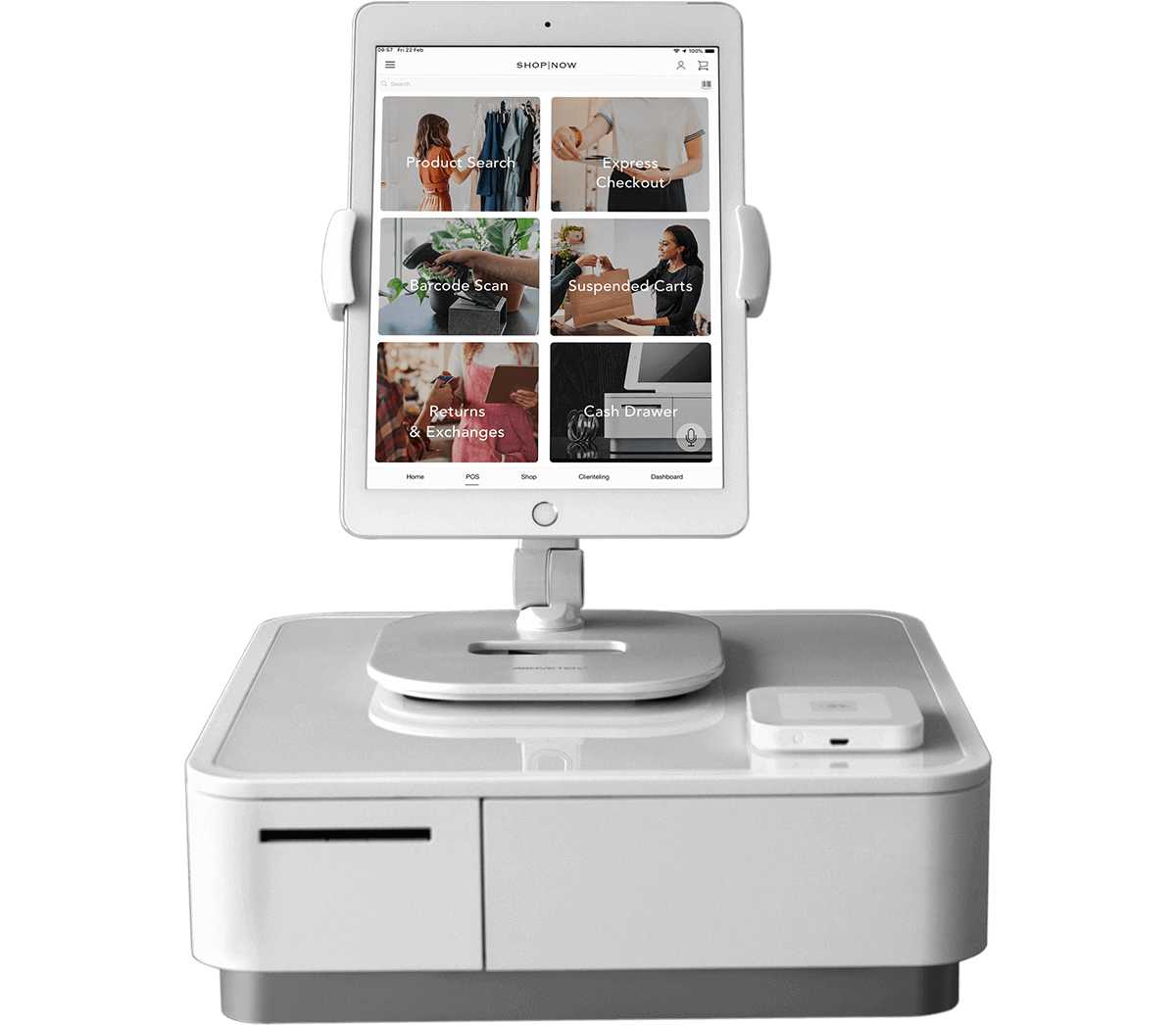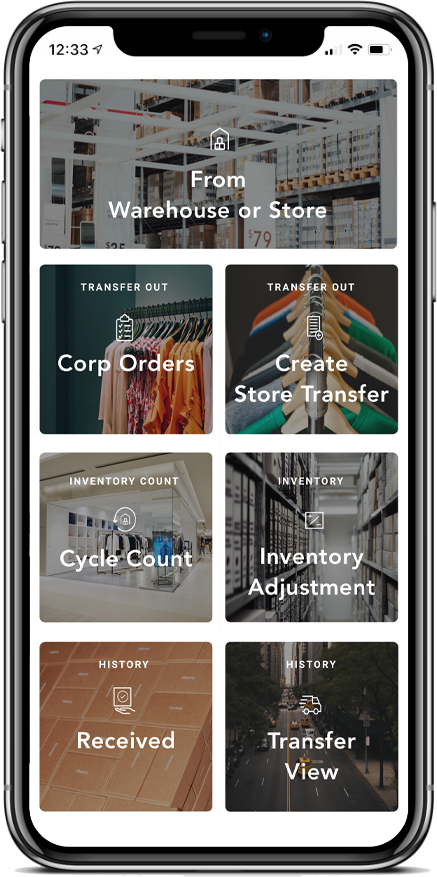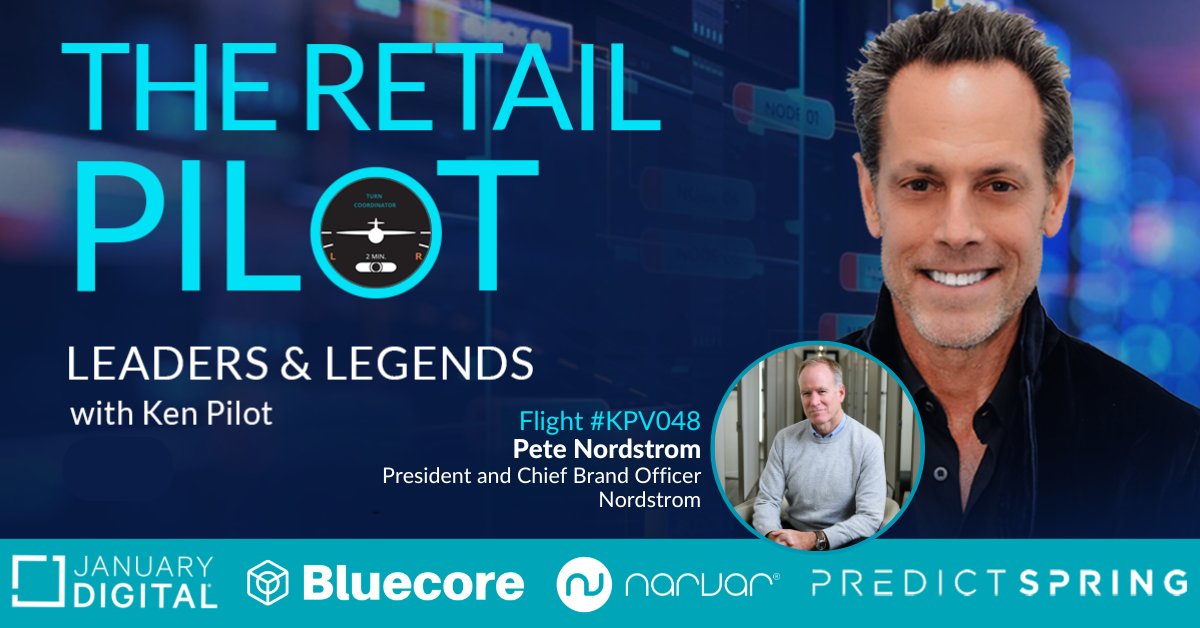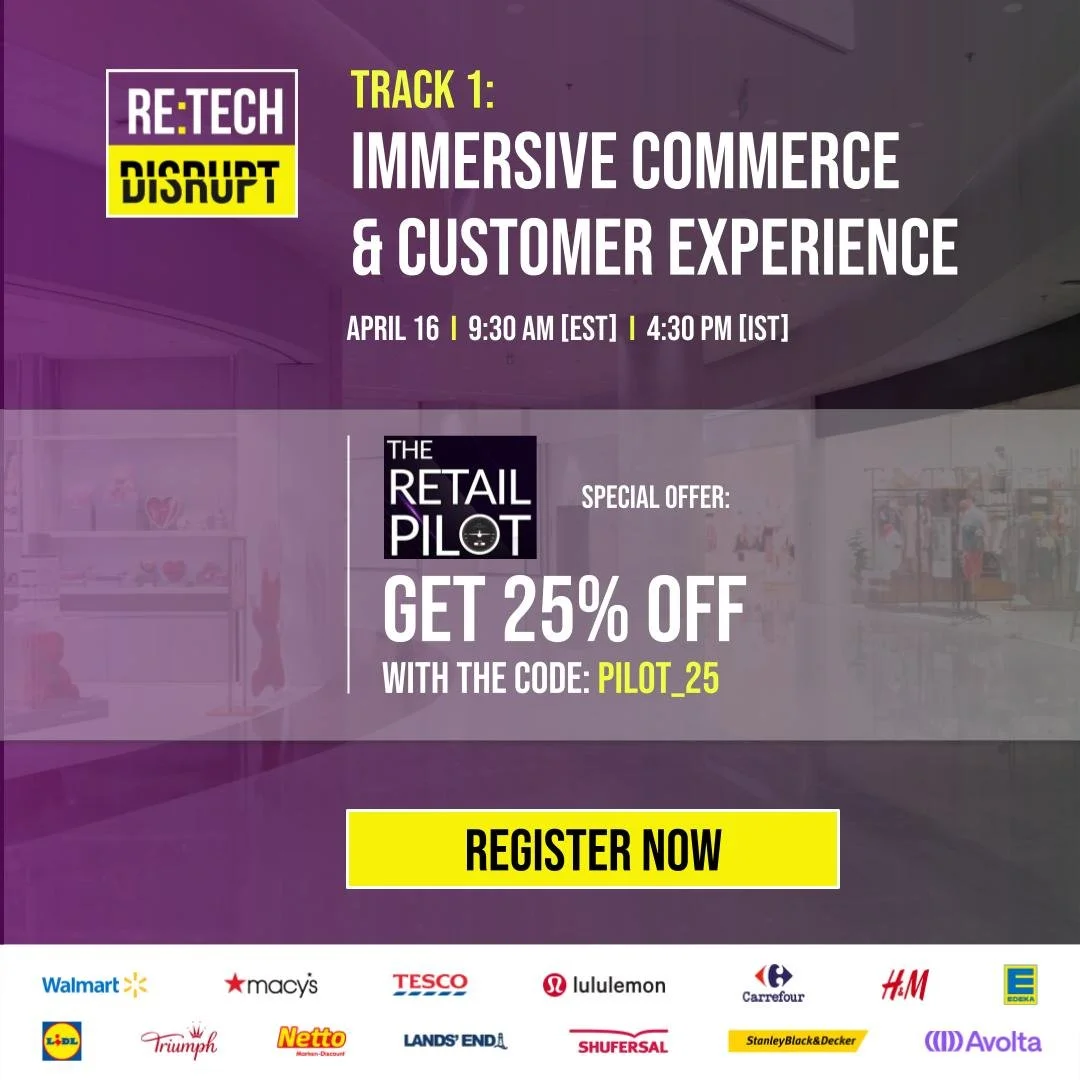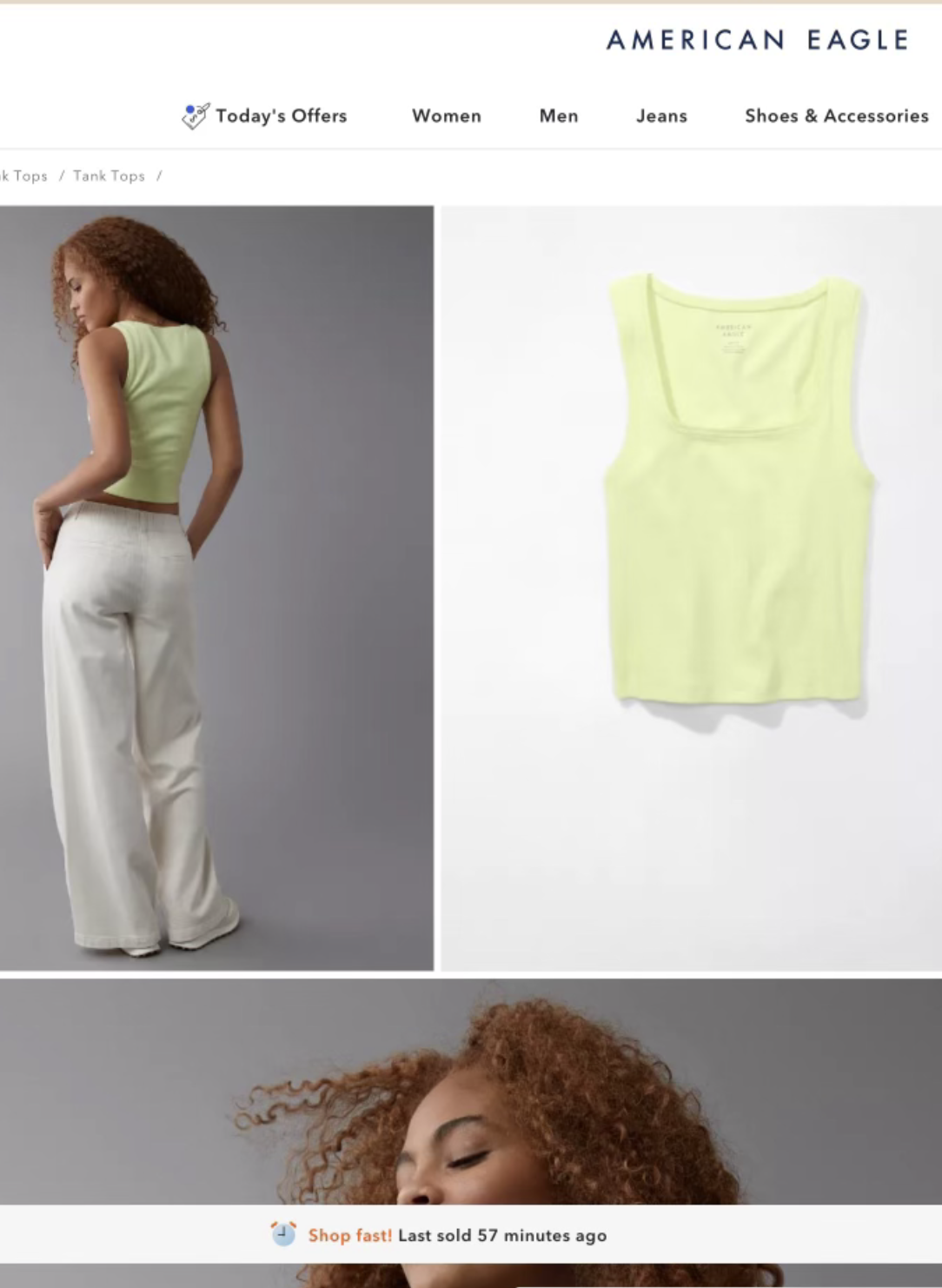
July 25, 2024
KPOV
SLOW IT DOWN
What does the customer really need by tomorrow? Next day delivery has become a staple for many companies however it does come with a cost and is not necessary for all product. How should companies tailor their shipping offers to continue to encourage purchases but do it most economically from a shipping perspective? Let’s review…
The Business Perspective: High Costs and Complexity
For businesses, offering next-day delivery can significantly increase operational costs and complexity. Fulfilling orders within such tight time frames requires sophisticated logistics networks, additional warehousing, and often premium shipping rates. These expenses are typically passed on to consumers through higher product prices or shipping fees. Small and medium-sized businesses may struggle to compete with larger retailers that can more easily absorb these costs.
Next-day delivery can also lead to inefficient inventory management. To meet rapid turnaround times, businesses may need to overstock items across multiple warehouses, tying up capital and increasing the risk of unsold inventory. This approach contradicts lean supply chain principles that many companies strive to implement.
Consumer Perspective: Psychological vs. Practical Needs
From a consumer perspective, the perceived need for next-day delivery is often more psychological than practical. While there are certainly situations where rapid delivery is crucial - such as for medical supplies or emergency replacements - most purchases can wait an extra day or two without significant inconvenience. In fact, many consumers are willing to wait longer for deliveries if it means lower costs. A significant portion of shoppers prioritize free shipping over speed. In fact, 82% of U.S. consumers were willing to purchase more items to qualify for free delivery, even if it meant a longer wait. This suggests that cost is often a more important factor than speed for many buyers.
It's worth noting that the push for ultra-fast delivery has largely been driven by retailers rather than consumer demand. Only about half of retailers currently offer same-day shipping, despite the industry hype. This gap between availability and actual consumer needs suggests that many businesses may be overestimating the importance of next-day delivery for their customers.
Environmental Impact: A Call for Sustainable Practices
The environmental impact of next-day delivery is perhaps the most compelling reason to reconsider its importance. Rush shipping often results in partially-filled delivery trucks making multiple trips, increasing fuel consumption and emissions. It can also lead to excessive packaging waste, as items that could have been consolidated into a single shipment are sent separately to meet tight deadlines.
Slower delivery options allow for more efficient route planning and load consolidation, reducing the carbon footprint of each delivery. They also give retailers more time to use sustainable packaging solutions and optimize their supply chains for environmental performance.
A Balanced Approach: Offering Choice and Education
Instead of defaulting to next-day delivery for everything, a more nuanced approach is needed. Retailers should offer a range of delivery options, educating consumers about the trade-offs between speed, cost, and environmental impact. This allows customers to make informed decisions based on their actual needs rather than artificially inflated expectations.
For truly time-sensitive items, next-day or even same-day delivery can remain an option. However, for most purchases, slightly longer delivery windows (2-3 days) can provide a better balance between convenience, cost, and sustainability. Some retailers are already experimenting with incentivizing slower shipping options by offering discounts or rewards points to customers who choose them.
Businesses can also focus on improving other aspects of the customer experience that may be more valuable than sheer delivery speed. For example, providing accurate tracking information, flexible delivery options (like in-store pickup or secure lockers), and excellent customer service can enhance satisfaction without the need for universal next-day shipping.
In conclusion, while next-day delivery has its place in the e-commerce ecosystem, it shouldn't be considered essential for every purchase. By challenging the assumption that faster is always better, we can create a more sustainable and efficient online shopping experience. Retailers, consumers, and the environment all stand to benefit from a more thoughtful approach to delivery speed. As we move forward, the focus should be on finding the right balance between convenience, cost-effectiveness, and environmental responsibility in our online shopping habits.
FEATURED PARTNER
A hot start-up based in Austin Texas, Reflex provides retailers with on demand associates, solving the problem of same day callouts. Yes, it’s like the Uber of store associates.
Reflex can fill store labor voids from greeter and sales associate to shipment receiver and stock replenisher.
Reflex handles all screening and hiring paperwork and pays the employees within 24 hours.
Operating in over 20 cities with customers that include Faherty, Skims, Vineyard Vines and more, Reflex has thousands of trained retail associates ready to fill last minute openings.
Associates access retail/brand training information prior to stepping into the store.
Following the shift, the associate receives an online review (and also reviews their experience) which will position them better (or eliminate them completely) when the next opportunity appears.
Think about how great Reflex can be for seasonal hiring! Hat’s off to Mike Meyers, co-founder and CEO, and Mike Tucci (investor who turned me onto Reflex).
THE RETAIL PILOT PODCAST
Our latest flight of The Retail Pilot - Leaders & Legends features Sid and Ann Mashburn, Founders of Sid Mashburn and Ann Mashburn. Ken interviews the ultimate power couple in retail and design. Sid's Journey includes time at J.Crew, Lands' End and Ralph Lauren, while Ann's Background includes: Vogue and J.Crew. Together, they’ve built a brand known for detailed designs, quality fabrics, and top-notch customer service.
New episodes out each week - subscribe now!
July 12, 2024
KPOV
The DTC Dilemma: Luxury’s Focus on Direct Channels and the Impact on Wholesale
In the evolving landscape of luxury retail, direct-to-consumer (DTC) strategies have become increasingly dominant. Luxury brands are prioritizing their own stores and online platforms, aiming to control their brand narrative and customer experience more tightly and not relying as much on distribution and wholesale partners. The luxury brands’ ability to reach the customer directly is putting more pressure on luxury wholesalers—both online and in department and specialty stores.
Why Luxury Brands Are Embracing DTC Strategies
Brand Control and Customer Experience: DTC allows luxury brands to maintain stringent control over their image, pricing, and the customer journey. This control is essential in a market where brand perception is everything.
Higher Profit Margins: By bypassing intermediaries, brands can capture higher margins. Selling directly to consumers removes the need to share profits with wholesalers or retailers.
Valuable Customer Data: Direct sales provide access to critical customer data, which can be used to enhance personalized marketing efforts and deepen customer relationships.
Significant Growth in DTC Sales
The shift to DTC has been reflected in significant growth figures. Online sales in the luxury sector have surged from 12% to 30% since 2020, while sales through company-owned stores have increased from 39% to 50% (Bain) (McKinsey & Company). Mono-brand luxury stores are growing, and for the first time, retail has surpassed wholesale (Bain).
Despite the advantages, an exclusive focus on DTC poses several challenges (with Nike the most obvious poster child)
Reduced Market Reach: Wholesale channels provide access to a broader audience that luxury brands might miss out on by focusing solely on DTC. Traditional retailers and department stores have established customer bases and marketing capabilities.
Operational Complexities: Managing a robust DTC operation demands significant investments in logistics,technology, and customer service. This can strain resources and lead to operational inefficiencies.
Market Saturation and Competition: As more brands pivot to DTC, the market becomes saturated, increasing competition and making it harder for individual brands to stand out.
Case Studies: Lessons from the Field
Ralph Lauren: Ralph Lauren has successfully pivoted its business model, exemplifying a trend among luxury brands towards DTC channels. This strategic shift has allowed the company to maintain a strong market presence while reducing its reliance on wholesale partnerships. In FY’24, Ralph Lauren reported a 3% increase in revenue, reaching $6.6 billion, primarily driven by robust growth in DTC and international markets. The company's Q3’24 performance highlights the effectiveness of this strategy, with DTC sales growing 9% and online sales increasing 8%. This growth in DTC channels has been accompanied by a significant increase in AUR, which rose 9% in Q3, building on a 10% growth from the previous year.
These improvements demonstrate Ralph Lauren's success in elevating its brand and enhancing profitability through direct consumer engagement. As a result of this DTC-focused approach, Ralph Lauren has seen a decline in its wholesale business, particularly in North America, where wholesale revenue dropped 15% in Q3’24. The company's wholesale segment now represents only about 16% of its total business, a significant reduction from its previous 25% share.
Chanel: Known for its selective distribution, Chanel has gradually increased its DTC efforts. This approach has helped it maintain brand exclusivity but also pressured its wholesale partners.
Net-a-Porter, Matches Fashion, Farfetch, and Mytheresa: These online wholesalers of luxury items have faced significant challenges, with some shuttering or being acquired due to the continued contraction of luxury product distribution channels.
The Role of Resale and Second-Hand Markets
As luxury brands intensify their DTC focus, the resale market for luxury goods is also growing. Platforms like The RealReal and Vestiaire Collective are capitalizing on the demand for second-hand luxury items, further squeezing traditional wholesale channels.
This channel does provide an on-ramp to customers who can't afford full price luxury, but want it. And in some cases, as with Hermes, proves that buying luxury can even provide a decent return on investment.
The Wholesale Squeeze
Wholesale sellers of luxury products are being squeezed from both ends—by the growth of DTC channels and the burgeoning resale market. This dual pressure is causing significant challenges for third-party distributors and multi-brand retailers.
The Industry Consolidation
The luxury industry is experiencing significant consolidation, both at the department store level and among brands. The most recent news of a merger between Saks Fifth Avenue and Neiman Marcus, illustrates how this consolidation can lead to stronger, more resilient businesses, but it also reduces the number of distribution channels available to luxury brands.
In the end, as the luxury market continues to evolve, brands that remain flexible and adaptable, continuously evaluating and adjusting their distribution strategies, will be best positioned to thrive in this dynamic landscape.
FEATURED PARTNER
ROKT pays brands/retailers to advertise on the bottom of their ecommerce receipt. No integration fee, no SaaS, no contract minimum, no kidding! Rokt works with over 300 advertisers (retailers/brands get to edit) and pays out about $.22/transaction. See why companies such as Nordstrom, Gap, Inc, American Eagle, ThredUp and many more are using Rokt to add million$ to their EBITDA. In addition to monetizing the traffic to your site, you can also use Rokt to drive new customer acquisition by advertising your brand with other Rokt customers.
THE RETAIL PILOT PODCAST
Our latest flight of The Retail Pilot - Leaders & Legends features Mindy Grossman. Ken's first interview with Mindy was over a year ago, and we're thrilled to have her return. Mindy is the Vice Chair of The Consello Group, a comprehensive advisory and investment platform. In this episode you will discover: The unique approach of Consello Group in brand building, transformation, and technology; How Consello's investment and advisory services stand out in the industry; Insights into their financial services and strategic investments.
New episodes out each week - subscribe now!
June 28, 2024
KPOV
Enhancing the In-Store Experience A Lifeline for Retail Brands
In today's competitive retail landscape, the in-store experience can be pivotal for saving not only individual stores, but entire brands. Retailers and brands are increasingly focusing on creating impactful and experiential store visits. Here's a look at how various brands are leading the way:
Customization and Personalization
Brooks Brothers offers made-to-measure services, providing a bespoke experience for customers. Sid Mashburn and Rowing Blazers are also embracing customization to set their products and brands apart. Rhone features made-to-measure shirts with personalized options like custom buttonhole colors and monogrammed jackets.
Health and Beauty Innovations
The health and beauty sector is leveraging store experiences to showcase their products. From cryogenics locations to Blue Mercury expanding its spa treatments, these brands emphasize the importance of physical experience.
Sporting Goods Engagement
Dick’s Sporting Goods creates immersive experiences within their stores, allowing customers to actively try products before purchasing. This hands-on approach helps build customer trust and satisfaction.
Enhancing Online Presence
As physical stores enhance their experiences, brands must also elevate their online presence. Incorporating video content, whether through livestreams or shoppable videos, boosts engagement and enhances the customer experience. This can be part of a broader Retail Media Strategy or through offering "how-to" content.
Thriving Retail Examples
Reformation: Utilizing technology for a seamless fitting room experience.
Brooks Brothers: Leveraging Knot Standard intelligence for made-to-measure clothing in all stores.
Sid Mashburn: Offering tailoring services and treating customers as welcome guests.
Rowing Blazers: Creating a unique in-store uniform experience.
CraveRetail: Implementing digital fitting room technology.
Walmart: Using digital shelf labels for geo-specific pricing, keeping stores fresh and adding value.
Grocery Stores: Providing recipes to inspire customers.
Cryotherapy: A standout in health and wellness experiences.
The Importance of Experience
Creating compelling in-store experiences encourages customers to revisit and fosters personalization in a world of commoditized products. Retailers must strive to get closer to their customers and address specific needs. Stores that are thriving are those that add or lead with unique experiences. Each retailer or brand must ask: What experience do we provide that keeps us relevant and sought after? The answer to this question will drive their business forward in both physical and digital spaces.
TECH TALK
Target Rolls Out Real-Time AI to 400 Stores: Enhancing Efficiency and Guest Experience
Target is set to revolutionize its in-store operations with the introduction of a new generative artificial intelligence tool called Store Companion. This innovative GenAI-powered chatbot, designed by Target, will be rolled out to team members at nearly 2,000 stores by August. Currently, the tool is being piloted at about 400 stores, where team feedback is being utilized to refine the experience ahead of the chain-wide rollout.
What is Store Companion?
Store Companion is a generative AI chatbot aimed at assisting Target team members with on-the-job process questions, coaching new team members, and supporting store operations management. The primary goal of this tool is to simplify tasks, increase efficiency, and enhance guest engagement, ultimately improving the overall shopping experience.
Key Benefits:
Enhanced Efficiency: Store Companion allows team members to work more quickly and efficiently.
Improved Guest Engagement: By freeing up team members' time, they can focus more on serving guests and creating a welcoming shopping environment.
Support for New Team Members: The tool provides coaching and answers to common questions, helping new team members get up to speed faster.
Strategic Importance:
This initiative is a part of Target's broader strategy to leverage GenAI across its business. By empowering team members and enhancing the guest experience, Target aims to support its long-term growth and innovation goals.
Leadership Insights:
"We know technology will continue to play an outsized role in the future of retail — for our team members, our guests, and our business," said Brett Craig, executive vice president and chief information officer at Target. "With that in mind, we're continually experimenting with new tools to make it even easier for our team to do their jobs and to bring more of what guests love about shopping at Target to life. The transformative nature of GenAI is helping us accelerate the rate of innovation across our operations, and we're excited about the role these new tools and applications will play in driving growth."
"Generative AI is game-changing technology and Store Companion will make daily tasks easier and enable our team to respond to guests' requests with confidence and efficiency," added Mark Schindele, executive vice president and chief stores officer. "The tool frees up time and attention for our team to serve guests with care and to create a shopping destination that invites discovery, ease, and moments of everyday joy."
Development and Rollout:
Target's in-house technology team developed Store Companion using real frequently asked questions and process documents from store teams across the U.S. The project moved swiftly from its initial testing phase to the planned rollout within just six months.
FEATURED PARTNER
Flex turns payment declines into increased revenues using an AI Driven platform that partners with merchants and payment providers to instantly review and recover failed customer transactions at no risk to the merchant and at no cost to the consumer. Flex leverages decades of real time underwriting and analytics experience to evaluate payments and broader customer information to identify good customers who have been incorrectly declined, transforming payment declines into successful transactions with zero friction for customers and zero risk for merchants.
THE RETAIL PILOT PODCAST
Our latest flights of The Retail Pilot - Leaders & Legends feature Ramy Sharp, a return guest and Founder and CEO of eponymous brand, Ramy Brook and Scott Tannen, entrepreneur, Founder and CEO of Boll & Branch.
New episodes out each week - subscribe now!
June 13, 2024
KPOV
Democratizing Fashion
Fashion is no longer confined to the runways of Paris or the pages of Vogue. Thanks to social media and retailers like Walmart, fashion trends are accessible to everyone. I sat down with Denise Incandela, EVP of Fashion at Walmart, this morning at CommerceNext, and we discussed how Walmart's strategy is focusing on making fashion both attainable and aspirational, bringing high style to every corner of America.
Walmart is enhancing its fashion appeal by continuing to invest in and build private brands as well as augmenting its offer with national brands. As Amazon has abdicated building their own brands and Target has focused almost predominantly on delivering proprietary fashion, Walmart has taken a more balanced approach to its fashion offer. This approach provides customers with high-low options, where affordable Walmart items can be paired with more expensive, trendy pieces.
Adding new national brands like Reebok, Chaps, and Jessica Simpson to its offerings, ensuring a constantly refreshed and desirable assortment. This extensive selection is available both in-store and online, enhancing the overall shopping experience. By incorporating these higher-priced national brands, Walmart is not only raising the average order value but also meeting customer demand for variety and quality, precluding her from leaving Walmart and buying the product elsewhere. In addition to the product they are developing and buying from vendors, Walmart is leaning heavily into their marketplace, with millions of additional skus made available to its customers without the onus of pre-paying and carrying that inventory.
Key to Walmart’s strategy is the expansion and elevation of their product assortment to include Gen Z.Today, Walmart announced that in July they are relaunching No Boundaries, their $2B young adult brand that’s one of their largest and most well-known fashion brands (introduced in 1994) - they want to be the Gen Z customer’s first choice for fashion.
Gen Z is looking for fashion brands that celebrate their journey towards self-expression and individuality.
The new No Boundaries is a modern, relevant, youthful brand that inspires and celebrates the unlimited potential of self-expression at an unbeatable value.
No Boundaries leads their opening price point brands in capturing the young adult customer with the highest contribution of 18-24 shoppers.
And if winning on earth with Gen Z wasn’t enough, they are taking on the Metaverse. One of the most exiting ways Walmart is tapping into the Gen Z customer is by working with creators who are curating No Boundaries outfits on Roblox and creating virtual twins. Roblox has 77M daily active users and is one of Gen Zs most popular platforms to engage with (spending two hours per day on the platform).
Through these efforts, Walmart is democratizing fashion, ensuring that everyone, regardless of their location, age or budget, has access to the latest trends and styles. Whether you're in Bentonville or NYC, Walmart makes it possible to stay fashionable without breaking the bank.
TECH TALK
Tech Platforms That Pay You: Boost Your Revenue with Minimal Effort
Imagine tech platforms that not only cost you nothing to integrate but also pay you to be their partner. No integration fee, no SaaS fee, no revenue share, and generally no contract. Sounds like a no-brainer, right? Here are a few platforms that offer truly fast and simple integration, with some going live within days if you're on Shopify.
Extend
Extend offers customers both extended warranties and package insurance. At checkout, customers can opt-in for package insurance (around 2% of the purchase price). Extend handles all claims and pays retailers about 30% of every customer opt-in. This service boosts customer confidence, leading to increased spending. Cha-ching!
ROKT
ROKT pays retailers to advertise at the bottom of their e-commerce receipts. They partner with over 300 advertisers and allow retailers to control who appears on their receipts (no competitors or unsuitable advertisers). On average, ROKT pays around $0.22 per transaction. Do the math and watch your revenue grow!
FlexCharge
FlexCharge approves 30% of your online credit card declines. They reverse transactions declined for reasons like fraud, insufficient funds, incorrect address, or card expiration. FlexCharge assumes all the risk and pays the retailer over 85% of the total transaction value. With credit card declines averaging around 10%, this could add up to 3% growth to your e-commerce business. Giddyup!
CNS
CNS is a carrier-neutral advisory that leverages its network of over 100 telecom and data service providers to reduce company rates. They have saved companies money on everything from telecom to AWS and video communications to online security. CNS centralizes and manages all your billing, often keeping your current providers but using their size (serving over 2,000 customers) to negotiate better fees. A free 2-week analysis/audit of your bills will highlight how CNS can reduce your costs or confirm you have the best possible pricing.
FEATURED PARTNER
THE RETAIL PILOT PODCAST
Our latest flight of The Retail Pilot - Leaders & Legends features Ken’s conversation with Hali Borenstein, CEO of Reformation.
Hali shares her journey in the retail industry, the growth of Reformation, and the unique store experience. She discusses the impact of a major investor, the company's growth strategy, and the innovative technology used in Reformation stores. In this conversation, Hali discusses Reformation's commitment to sustainability, their approach to sustainable fabrics, factory partnerships, circularity, vintage products, and marketing strategies. She also shares insights on leadership, mentors, and lessons learned from past decisions.
New episodes out each week - subscribe now!
May 30, 2024
KPOV
Storefront Real Estate Booms: A Decade-High Trend in Store Openings
The retail real estate market is experiencing a significant resurgence, as evidenced by Cushman & Wakefield's latest headline. Store openings are outpacing closures at a rate not seen in a decade. If this trend continues, we are on track for the most substantial net growth in years.
Discount and Fashion Retailers Lead the Charge
According to CoreSight Research, the retail sector's expansion is being driven largely by the discount sector, which accounts for over a third of new store openings. Fashion brands follow closely behind with 27% of the new openings, while grocery and convenience stores make up 22%.
Consumer Services Drive Leasing Demand
A notable trend is the robust demand for consumer services, which include food services, health and wellness, beauty treatments, and fitness—sectors that are not easily replaced by online alternatives. These services are driving nearly 50% of leasing activity, surpassing the 46% average seen between 2011 and 2019.
Open Air Malls and Strip Centers in High Demand
Open air malls are experiencing the greatest demand, reflecting the strength of outlet sales and off-price strip centers. There has been a significant increase in demand for retail spaces under 2,500 square feet and those over 25,000 square feet. More than half of the 725 Bed Bath & Beyond locations have been leased, with off-price retailers like Burlington leading the way.
Physical Stores: Crucial for Brand Growth
Despite the rise of e-commerce, physical stores remain the most profitable and critical component of a brand’s growth strategy. Smaller, strategically located stores provide key brand touch points and serve as essential distribution points. Interestingly, while most companies thrive with physical locations, Amazon continues to struggle with its brick-and-mortar strategy. Will they eventually get it right?
Conclusion
The current trends in storefront real estate highlight the enduring importance of physical stores in the retail ecosystem. With robust growth across various sectors and increased demand for diverse store sizes, the future looks bright for brick-and-mortar retail.
TECH TALK
Harnessing Technology for Optimal Retail Inventory Management
Retailers and brands face significant challenges in planning and forecasting sales and inventory down to the SKU level. Traditional methods, such as Excel, are being replaced by advanced AI-based platforms like Toolio. These tools streamline the planning process, offering greater precision and efficiency.
The Importance of Accurate Inventory Management
Accurately knowing your store’s on-hand inventory is crucial. Without advanced technologies like RFID, inventory inaccuracies range between 27-32%. To compensate, retailers typically carry 30% more inventory than necessary to prevent the top reason customers leave without making a purchase: not finding their size. Implementing RFID can improve inventory accuracy up to 95%, enabling retailers to reduce in-store inventory by at least 20%—a significant cost-saving measure across multiple stores.
RFID Platforms: Revolutionizing Inventory Accuracy
RFID platforms like RADAR, which utilize ceiling-mounted scanners, provide continuous scanning and alert store personnel when items are misplaced or unavailable on the floor but present in the store (such as in windows, fitting rooms, or stockrooms). Additionally, RADAR’s ability to record stolen items allows retailers to replenish stock immediately, instead of waiting for a cycle count.
Video Analytics: Reducing Fraud and Enhancing Security
Platforms like Deep North offer video analytics by leveraging in-store security cameras. This technology helps determine if customers are paying for all items in their basket or cart, significantly reducing fraud at self-checkout stations.
FEATURED PARTNER
Wunderkind strives to bring marketing technology to life in a way that benefits marketers worldwide and helps brands build better relationships with consumers. Their AI-driven performance marketing solution collects consent-based, first-party data and identifies anonymous traffic for brands in order to scale hyper-personalized one-to-one messages.
With the recent launch of the Autonomous Marketing Platform, which harnesses the power of AI to streamline and automate how marketers build, optimize, and report on their customer experiences to drive revenue, Wunderkind will empower marketers in a new way.
The first application of the Autonomous Marketing Platform, Studio, is now available. Studio empowers Wunderkind clients and services teams with efficiency, streamlining the creative process and providing self-service capabilities. Brands such as Harley-Davidson, Perry Ellis and Shoe Carnival partner with Wunderkind to drive top-line revenue through their guaranteed results.
THE RETAIL PILOT PODCAST
Our latest flights of The Retail Pilot - Leaders & Legends feature Danielle Bernstein & return guest, Chris Burch.
Danielle Bernstein is a native New Yorker and fashion influencer turned business mogul. She has a dedicated fan base of over 3.3 million followers and counting across her social media platforms. Danielle started her internationally recognized blog in 2010 as a daily dose of outfit inspiration for women everywhere, before growing the platform into an aspirational yet relatable home for all things coveted. Danielle has since launched her brand, Shop WeWoreWhat, a direct to consumer and wholesale business with millions of customers worldwide.
Chris Burch is the visionary Founder of Burch Creative Capital. Ken reconnects with Chris to discuss his latest ventures and innovations over the past year. From the luxurious NIHI resort to the health-focused GreenLane salads, the pioneering LabNine prefab housing developments, and the stylish STAUD fashion brand, Chris Burch continues to lead with creativity, purpose, innovation, and rigor. Listen up as Ken explores how Chris is transforming industries and setting new standards in luxury, wellness, housing, and fashion.
New episodes out each week - subscribe now!
May 16, 2024
KPOV
Collaborations: A Strategy for Keeping Your Brand Fresh
The Power of Collaborations in Branding
Gap just announced a new collaboration with Taylor Swift’s go-to brand, Doen. For over a decade, collaborations have proven to be a highly successful branding strategy. By combining the creative forces of an existing brand with another design entity or celebrity partner, brands can elevate their appeal to consumers. From designers and musicians to athletes and influencers, these collaborative partnerships can significantly boost a brand's visibility and relevance.
Crafting a Winning Collaboration Strategy
To maximize the impact of a collaboration, it's essential to have a well-thought-out strategy. This approach is similar to the methodical curation of exhibits in museums, which carefully select artists to keep visitors returning throughout the year. A prime example of successful collaboration is RH (Restoration Hardware). CEO Gary Friedman consistently engages top global design talent to keep the brand innovative and exciting. By leveraging outside talent, brands can augment their internal creativity, maintaining a fresh and appealing presence to a wider audience.
Notable Collaboration Success Stories
Several recent collaborations have achieved significant success, demonstrating the potential of this strategy:
Dior x Stone Island: This partnership combined luxury fashion with cutting-edge streetwear, creating a unique blend that appealed to both brands' audiences.
Karl Lagerfeld x H&M: This collaboration brought high fashion to the mainstream, allowing consumers to access Lagerfeld's iconic designs at more affordable prices.
Jennifer Fisher & CB2: This partnership merged contemporary jewelry design with home decor, offering consumers distinctive and stylish home accessories.
The Risks of Collaborative Partnerships
While collaborations can be immensely successful, they are not without risks. Some partnerships have faced significant backlash, highlighting the importance of careful selection and strategy. For instance, collaborations involving Kanye West with Gap and Adidas encountered substantial criticism, affecting both brands' reputations.
In conclusion, collaborations can be a powerful tool for keeping a brand fresh and appealing. By strategically partnering with other creative forces, brands can continuously innovate and attract a broader audience. However, it is crucial to carefully plan and execute these partnerships to avoid potential pitfalls and maximize their positive impact.
TECH TALK
Introducing our Newest Partner
We’re excited to share that Stan Rosenberg is joining us as our Director of MarTech.
Stan has worked on the brand and vendor sides of marketing for over a decade and is now the Founder of Storm King Consulting, where he is building an Executive Network of 225+ Marketing Leaders.
Stan will be launching a new division within Ken Pilot Ventures that provides digital strategy audits, runs vendor RFP’s, and even helps with implementation of technology vendors. This will encompass ESP’s, CDP’s, Loyalty Platforms, Agency Selection, CRO, and Analytics. This critical offering will alleviate leaders from the pain points of a cumbersome, time consuming vendor selection process. We’re confident this will allow our clients to get more value out of their tech stacks and we’ll even guarantee a cost savings in the audit and vendor selection process that’s greater than our fees.
Stan is also the founder of Trip of a Lifetime, a non-profit organization that provides underserved students with summer travel experiences. He’s based in NY and is a diehard Mets, Knicks, and Jets Fan.
Please reach out if you’re interested in setting up a complimentary call with Stan and Ken to discuss an audit for your brand.
FEATURED PARTNER
Raspberry provides the power of generative AI to design teams. The platform allows designers to iterate designs far more quickly, increase speed to market while reducing sampling costs and see product on ai generated models in “real life” locations. Raspberry does not replace designers, it enhances their productivity.
Raspberry has enabled brands like H&M and Coppel Group to create best-selling designs validated to be in high demand, reduces sample cost by 30% and helps streamline the design cycle from 6 months to 6 days - to reclaim $300B of missed sales and profitability, while reducing waste.
Raspberry was selected by McKinsey and Business of Fashion as a 2024 top vendor for generative AI fashion design and has been featured in Vogue, WWD, Forbes, Fortune, and BOF.
THE RETAIL PILOT PODCAST
Our most recent flight of The Retail Pilot - Leaders & Legends feature Entrepreneur, Andrew Blackmon.
Andrew is the co-founder and CEO of The Black Tux. As a true entrepreneur, Andrew identified a problem and solved it –finding a better way to rent suits and tuxedos for formal events. Listen as he discusses his lack of expertise in the industry being an advantage, the capital intensive infrastructure required to house, clean and tailor suits and tuxedos, and the focus on customer satisfaction – including Andrew sharing his personal cell phone number with his customers!
New episodes out each week - subscribe now!
May 2, 2024
KPOV
Retail Innovation
Attending the World Retail Congress in Paris last week was a game-changer (move over, Vegas!). This premier event brought together top-tier department stores and brand leaders (mostly European), assembling for a dynamic two-day conference.
The agenda? A deep dive into cutting-edge topics such as AI, in-store experiences, revitalizing heritage brands, and groundbreaking innovation.
One standout presentation (Linked Here), spearheaded by BCG, caught my attention as it delved into the latest investment trends among industry “innovators.” From Retail Media Networks to Marketplaces and Social Commerce, the session shed light on where the smart money is flowing. BCG's comprehensive survey encompassed a diverse range of companies, from corporate giants to nimble players with sales under $50 million.
It’s great read to understand what the important trends are for companies focused on innovating.
TECH TALK
The Marketplace Era
Nordstrom just announced its new Marketplace that will showcase a broader selection of products, sizes and brands and enhance the company’s e-Commerce business.
The significance of marketplaces and dropshipping is on the rise in today's digital landscape. A company with a marketplace strategy is both selling third-party brands on their platform and selling their products on other platforms. However, larger corporations like Amazon, Walmart, Macy’s, and Nordstrom operate more akin to a dropship strategy which is defined by leveraging 3rd party brands, curating their assortment, showing the product online and not owning any of the inventory. There is no better way to improve your GMROI.
To thrive in this evolving market, it's essential to leverage leading tech platforms that support dropshipping and marketplaces, such as Mirakl, CommerceHub, and Commercetools. Additionally, platforms like Shopifyoffer plugin solutions including Fabric Commerce and Cymbio to streamline operations and enhance performance.
Here are a few golden rules for success in this arena:
Appoint a dedicated individual to oversee business operations.
Curate your assortment meticulously, prioritizing quality over quantity.
Aim for margins comparable to wholesale purchasing.
Establish robust Sales Licensing Agreements (SLAs) to uphold vendor accountability and ensure customer satisfaction.
FEATURED PARTNER
I recently joined forces with Matt Mueller, co-founder and CEO of Knot Standard, as Head of Strategy and Board Advisor.
Knot Standard, a leading made-to-measure (MTM) platform, is undergoing a strategic shift from a direct-to-consumer (DTC) brand to a tech-enabled platform empowering brands to deliver MTM services under their own labels. Our successful partnerships include industry giants like Nordstrom, Brooks Brothers and Billy Reid, with the latter now a key partner as they are taking over Knot Standard showrooms and doubling down on MTM.
Similar to the dropship model (and why I love it), Knot Standard revolutionizes the retail experience by enabling brands to provide bespoke services without the burden of inventory management or dedicated space. With just 200 ft², we can offer MTM, delivering unparalleled personalized service and a remarkable 99% fit accuracy. With access to over 18 factories covering a wide range of products from knits to wovens, suits to tuxedos, and catering to both men's and women's fashion, Knot Standard offers a distinct advantage for retailers. Our extensive fabric library enables suit price points from $495 to $2,500 (Loro Piana). Just another way to defy GMROI:).
THE RETAIL PILOT PODCAST
Our most recent flights of The Retail Pilot - Leaders & Legends feature Retail leaders and entrepreneurs with very different backgrounds.
Michelle Wlazlo is EVP, Chief Merchandising Officer of JCPenney and is responsible for leading the Company’s global merchandise strategy and operations. Since joining the company, she has led the charge in clarifying and defining the positioning of private brands to give customers more choice. Wlazlo brings more than 30 years of merchandising and stores experience from a variety of retailers including Target, where she was senior vice president of merchandising, and Gap, where she spent 19 years in a variety of roles. She began her career at Saks Fifth Avenue, Inc. Wlazlo attended Lowthian College in Minneapolis and the Executive Education Program at Columbia University’s Graduate School of Business.
Peiman Raf is the Co-Founder and CEO of Madhappy, a contemporary lifestyle brand that develops and designs goods for the curious. After graduating from the Michigan Ross School of Business, Peiman spent a short stint in investment banking. Recognizing mental health as a growing societal issue, Peiman launched Madhappy with his brother, Noah and two friends, Josh and Mason in 2017 as a platform to uplift others and drive conversation around mental health. In a few short years, Madhappy ignited a cultural movement around optimism garnering an investment from luxury conglomerate, LVMH in 2019. Along with his Co-Founders, Peiman has been named Forbes 30U30 and featured in major publications such as The New York Times, Vogue, GQ and more.
New episodes out each week - subscribe now!
APRIL 18, 2024
KPOV
Product Distribution is a critical aspect for brands seeking broader market reach.
Direct-to-consumer (DTC) brands are expanding into wholesale channels, while others, like Coach, are leveraging platforms such as Amazon. Additionally, brands are actively pursuing placement in innovative platforms like Apple's new VisionPro and establishing shop-in-shops within renowned retailers like Sephora and luxury department stores. To extend digital reach internationally, partnering with global e-commerce solutions such as ESW (eShop World) is key.
Leveraging the power of social commerce, where sales thrive on platforms such as TikTok and Instagram, and harnessing he influence of celebrities, influencers, and user-generated content (UGC) to enhance your organic posts will drive sales.
These strategies represent significant opportunities for brands to strategically position their products closer to customers, embracing the concept of Omni-channel distribution while deleveraging risk and Capex.
TECH TALK
In-Store “Tech-Out”
Enhanced store technology plays a vital role in meeting the evolving needs of today's shoppers, with a majority still preferring the in-store experience.
Leveraging modern POS solutions like PredictSpring (Featured Partner) facilitates seamless online purchases and in-store transactions, including Buy Online, Pick Up In Store (BOPIS) services. Additionally, digital screens, such as those offered by Glass-Media, expand product accessibility beyond physical store inventory while effectively promoting store-specific promotions.
The implementation of RFID technology, powered by companies including Radar, enables precise inventory tracking, facilitating optimized stock management and meeting customer demand with lean size runs.
Workforce tools like Zipline streamline operations for store teams, ensuring efficient day-to-day management. Moreover, companies like FourKites utilize GPS technology to provide real-time insights for store management, such as tracking delivery trucks and optimizing logistical operations.
Embracing these technological advancements will enhance overall store efficiency and customer satisfaction.
FEATURED PARTNER
A global, Modern POS, PredictSpring combines in-store and online transactions, extended aisle, inventory management/cycle counts, mPOS, BOPIS and clienteling. Customers include: Deciem, Steve Madden, Movado, LoveSac, Janie & Jack and Bouclair.
Meet the PredictSpring team May 22-23 at Salesforce Connections in Chicago
THE RETAIL PILOT PODCAST
Our most recent flights of The Retail Pilot - Leaders & Legends feature Retail leaders from two of the largest Retail Store brands in the US.
Denise Incandela is Executive Vice President of Fashion and Private Brands for Walmart U.S. In this role, Denise is propelling Walmart’s reputation as a fashion destination, helping democratize access to stylish, quality apparel for Walmart’s 140 million weekly shoppers.
Pete Nordstrom is the President and Chief Brand Officer of Nordstrom. Throughout his career, Pete has helped Nordstrom innovate the customer shopping experience and redefine the role fashion plays in customers’ lives leading major strategic initiatives such as building the designer offering to a $1.5 billion business, evolving Nordstrom’s mix of brands and categories and bringing in limited distribution brands as exclusive partners.
New episodes out each week - subscribe now!
APRIL 4, 2024
KPOV
"The Luxury E-Commerce Bubble: Who Will Emerge Victorious?"
The New York Times recently asked, “Has the luxury e-commerce bubble burst?”
Explore the fallout of luxury e-commerce giants like MATCHES and FARFETCH, and discover how traditional department stores like Saks Fifth Avenue and Nordstrom could capitalize on the changing landscape.
In light of MATCHES declaring bankruptcy and FARFETCH's significant valuation decline, the luxury e-commerce sector is facing scrutiny. As industry giants falter, traditional department stores like Saks Fifth Avenue, Neiman Marcus Group, Nordstrom, and Macy's are poised to capitalize. With their established real estate presence and robust online platforms, they could emerge as winners in this evolving market. Could the downfall of online-only luxury players spell opportunity for department stores? Join the conversation.
TECH TALK
Our Israeli Tech Partner, Re:Tech is hosting Re:Tech Disrupt live from the “Startup Nation.” Join the first of four events on April 16th as top tech leaders and retail executives meet the next generation of cutting-edge tech solutions focused on immersive commerce and customer experience. Use our discount code PILOT_25 to save 25% off the registration fee.
FEATURED PARTNER
Powered by real-time data, Taggstar’s Social Proof Messaging, Social Proof Recommendations and eXtended Messaging tap into consumer behaviors to help retailers and brands deliver dynamic shopping experiences that convert and significantly boost the bottom line. Consumers are greatly influenced by the actions of others. Understanding what other people are buying in real-time, helps shoppers discover products and make more informed and confident buying decisions.
THE RETAIL PILOT PODCAST
Our most recent flights of The Retail Pilot - Leaders & Legends feature two Retail leaders who epitomize passion.
Simeon Siegel is a top Retail Analyst for BMO Capital Markets. Simeon stumbled into the retail sector by luck but fell in love with it due to the combination of qualitative story-telling and quantitative evidence where “the numbers don’t lie”. Topics in this episode range from Simeon’s opinions of The TJX Companies, Inc., Under Armour and Peloton Interactive to the impact experienced by brands who are pivoting from Wholesale to DTC (i.e. Nike).
Amy Williams has been a fashion leader for the last 30+ years, specifically in the Denim category. After 19 years at Gap Inc., she moved to Lucky Brand and ultimately found her home leading Citizens of Humanity since 2009. From building strategic distribution strategies beyond wholesale to maintaining brand integrity with a no-discount policy, Amy shares her wisdom and passion for a business that is growing organically in a very competitive retail landscape.
New episodes out each week - subscribe now!
MARCH 21, 2024
KPOV
Exploring Retail Media Networks (RMNs) - A Shoptalk Hot Topic
My “KPOV” for the week is about “Retail Media Networks” (RMN), a hot topic at Shoptalk, which concluded yesterday.
Retail Media Networks (RMNs) are revolutionizing digital advertising within retail spaces. Essentially, an RMN involves a retailer allowing brands to advertise on their digital platform, whether online or in-store. This strategic collaboration fosters increased engagement and conversion rates.
For instance, consider Dick’s Sporting Goods featuring video content from Nike in their storefront windows, or Nike leveraging the opportunity to launch new products or showcase exclusive sneaker drops on Dick’s e-Commerce site. Similarly, Veronica Beard may utilize video content from their runway shows to highlight products available on Nordstrom.com.
With RMNs, brands can execute highly targeted marketing campaigns within retail environments, leading to enhanced sales performance and RMN fees. It's a symbiotic relationship benefiting both parties involved.
When considering where to allocate your brand's digital advertising assets, RMNs present an enticing opportunity for maximizing visibility and driving conversions.
TECH TALK
Streamlining Business Operations: The Era of Tech Platform Consolidation
In the realm of business operations, the concept of Tech Platform Consolidation is gaining significant traction among brands and retailers. The objective? To streamline operations by reducing the number of platform providers required to run a business efficiently.
Amidst the myriad of solutions available, it's increasingly evident that a single platform can often cover a substantial portion of business needs, upwards of 80% or more. Not only does this streamline operations, but it also presents a more cost-effective solution.
To embark on this journey of consolidation, it's crucial to conduct a comprehensive inventory of existing tech providers across various operational areas. This evaluation will help identify essential platforms and highlight redundant ones that can be phased out.
When exploring new platforms, consider hosting a Request for Proposal (RFP) with a minimum of three contenders in the respective space. Prioritize proof of concept demonstrations before making any commitments and negotiate short-term agreements whenever possible. Remember, it's often more advantageous to "rent" a platform rather than invest resources in building one from scratch. Renting not only saves time but also ensures access to a superior solution.
Embracing the ethos of Tech Platform Consolidation can lead to enhanced efficiency, reduced costs, and a more streamlined business operation.
FEATURED PARTNER
Narvar provides the best post-purchase experience for those shopping online. The platform enables retailers and brands to effectively communicate with customers providing estimated delivery dates, reduces the need for online support lowering customer queries, automates the return process while providing customers with exchange alternatives, and manages customer expectations on package(s) delivery which may be coming from multiple sources.
THE RETAIL PILOT PODCAST
An article in the Wall Street Journal last week reminded us of Ken’s insightful conversation on The Retail Pilot podcast with Todd Snyder, founder of the men’s fashion brand, Todd Snyder. Read the article HERE, and listen to Ken’s conversation with Todd on your favorite podcast platform.
New episodes out each week - subscribe now!







